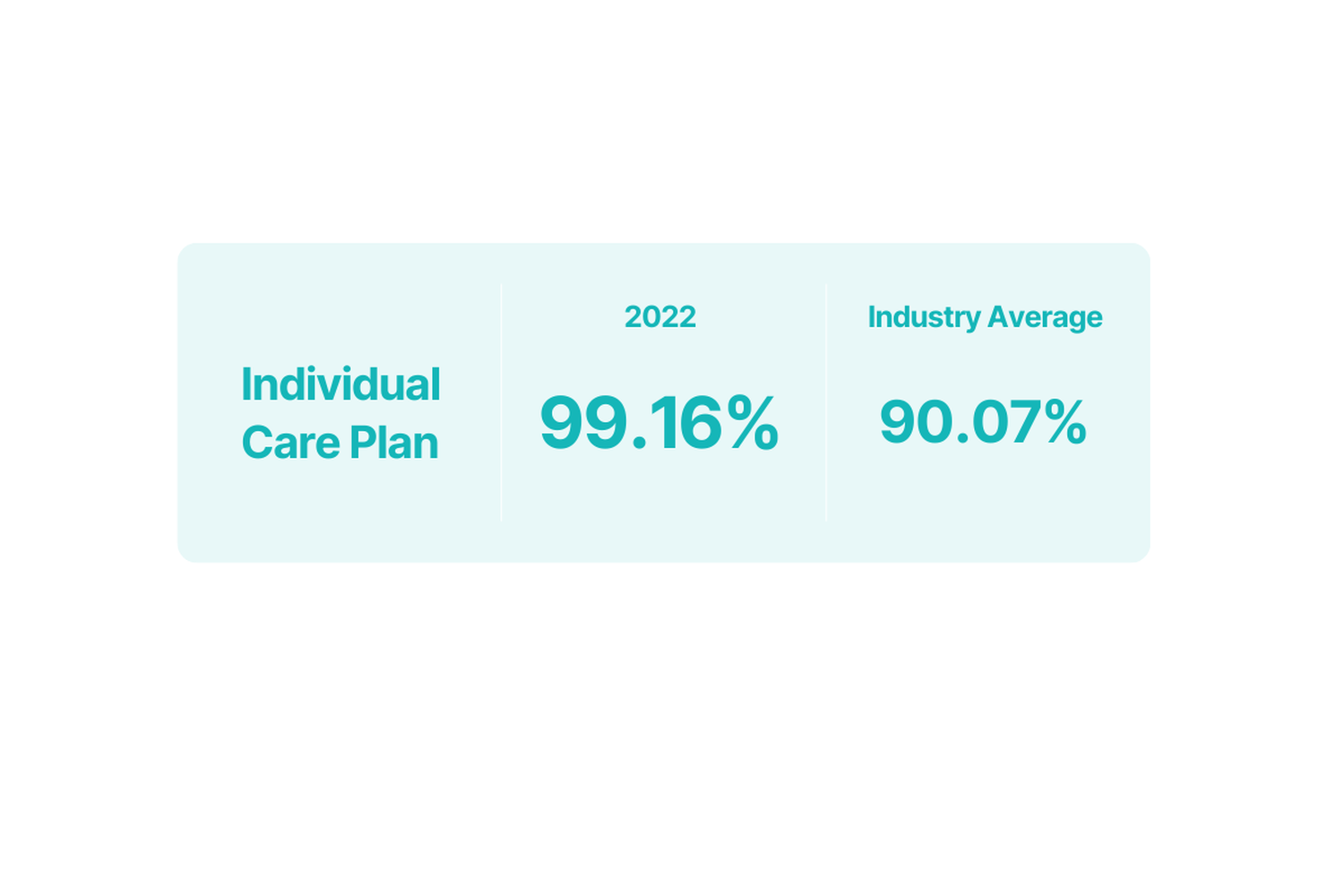Patient Outcomes
As part of our quality framework, we regularly measure and benchmark ourselves against a range of 'Clinical Indicators'.
Driving quality and outcome improvements in rehabilitation
Our Performance
Our hospital participates in the Australasian Rehabilitation Outcomes Centre Program (https://www.uow.edu.au/ahsri/aroc/about/). This program encompasses a range of measures focusing on the outcomes of our patient care.
The Australasian Rehabilitation Outcomes Centre provides each hospital with a report on their individual performance, along with a comparison against 125 other Australian Hospitals.
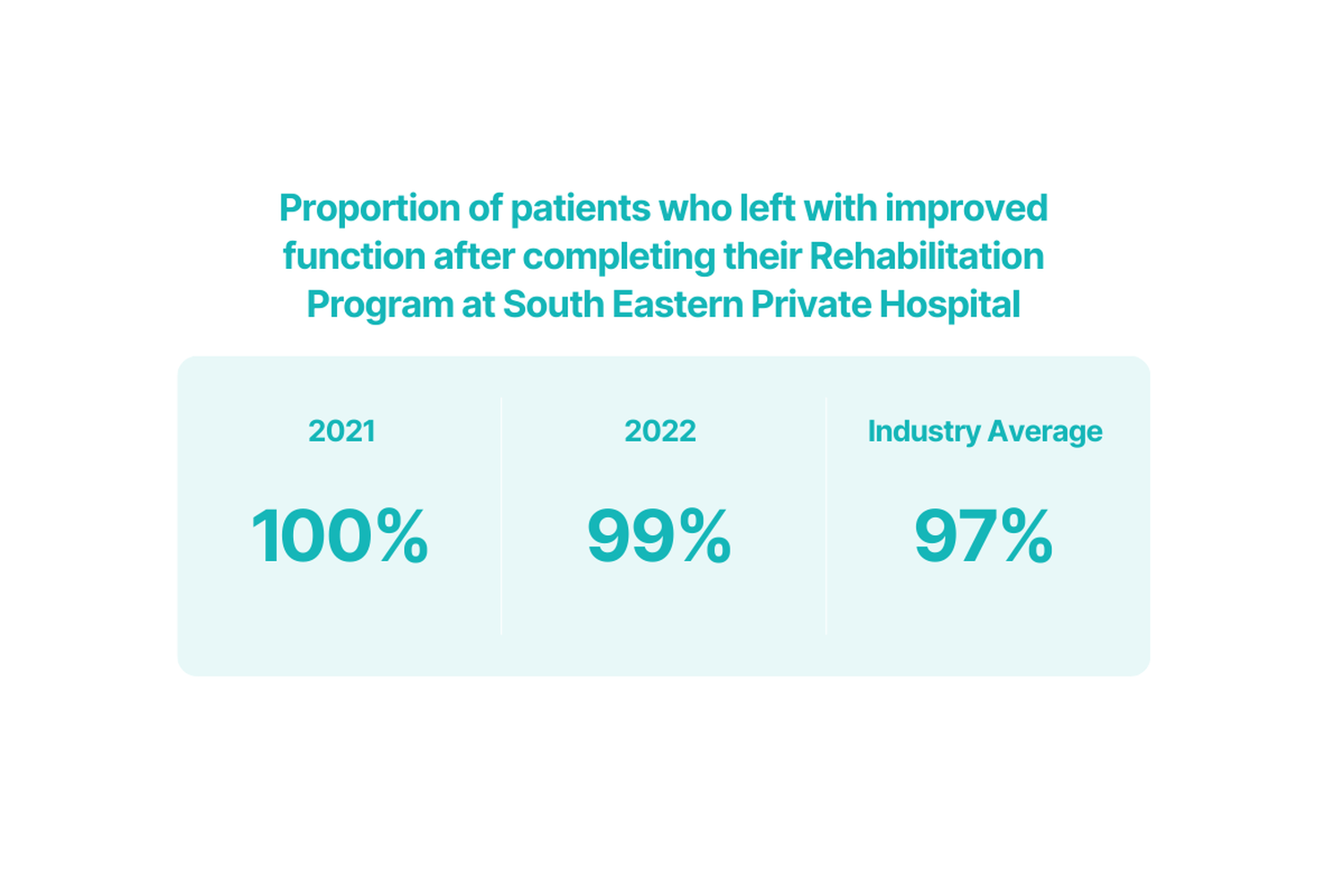
Infection Rate (Staph Aureus Bacteraemia or SAB)
South Eastern Private Hospital's SAB Rates
Germs can cause an infection known as staphylococcus aureus bacteraemia (SAB) which needs antibiotic treatment if it enters the blood. Some serious strains are resistant to antibiotics.
South Eastern Private Hospital’s rate of infection well below the national average for hospitals. To reduce the risk of hospital acquired infections, we use best practice infection prevention and control with a focus on hand washing as this is the most effective way to stop germs spreading or entering the blood.
We provide continual education and training to all our caregivers to ensure we keep our infection rate well below the national target.
The graph below shows the number of patients that developed a hospital acquired Staphylococcus Aureus Bacteraemia (SAB) infection. South Eastern Private Hospital’s rate is lower (better) than the industry benchmark. South Eastern Private Hospital has a number of risk mitigation strategies in place to reduce the risk of transmission of Health Care Associated Infections.
The most valuable prevention is for everyone to wash their hands, patients, visitors and health professionals alike.
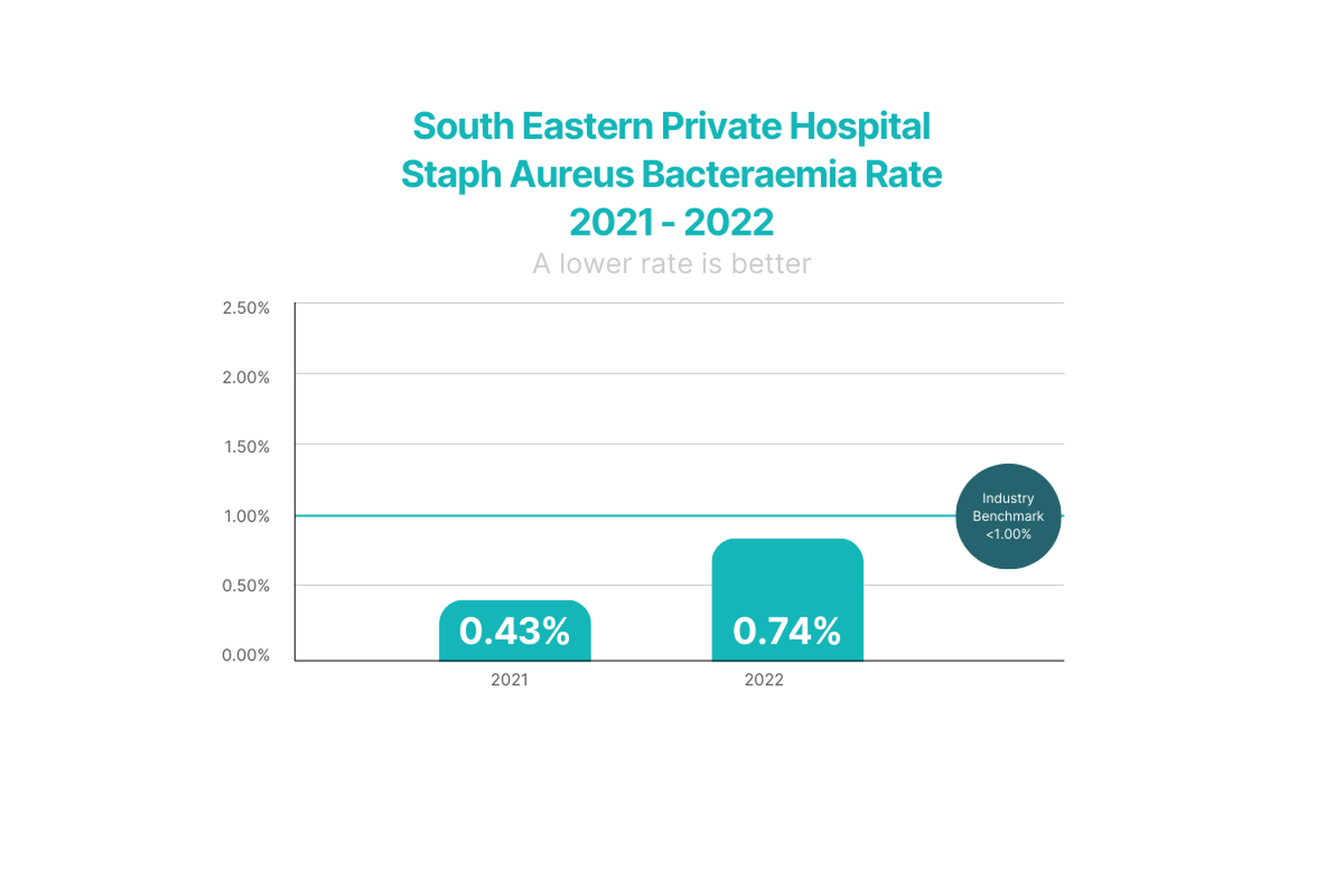
Clostridium Difficile (C Diff)
South Eastern Private Hospital's C Diff Rates
C Diff is an infection of the bowel that causes diarrhoea. It can be caused by too many courses of antibiotics or very strong doses of antibiotics. The industry rate varies from 2 to 3 cases per 10,000 days of patient care.
The graph below shows the Clostridium Difficile infection rate at South Eastern Private Hospital is well below the industry average, meaning a patient is less likely to develop a C Diff infection at South Eastern Private.
To reduce the risk of hospital acquired infections, we use best practice infection prevention and control with a focus on hand washing as this is the most effective way to stop germs entering the blood. We provide continual education and training to all our healthcare workers to ensure we keep our infection rate well below the national target.
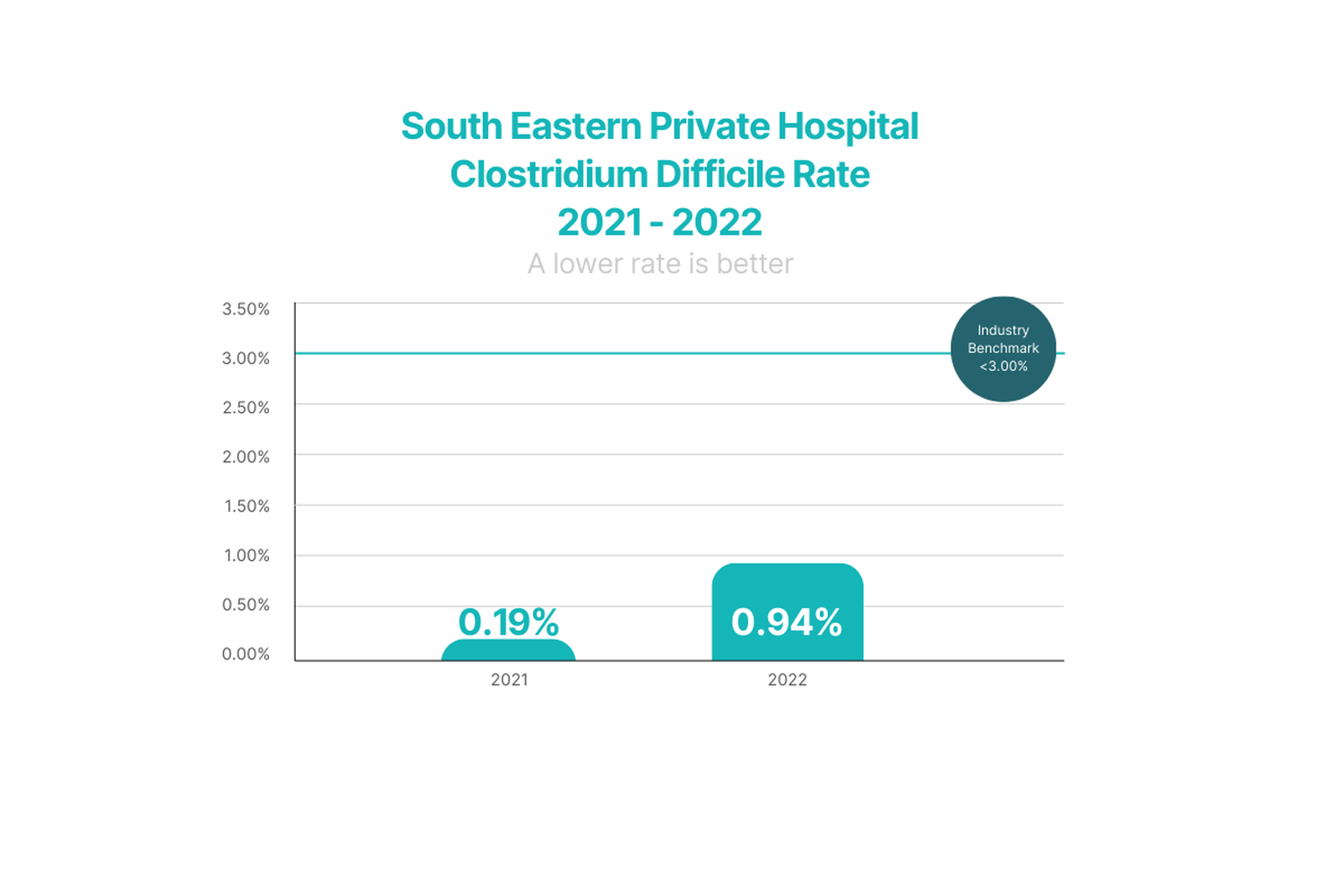
Patient Falls
South Eastern Private Hospital's Patient Fall Rates
A fall in a hospital is when a patient suddenly and unintentionally falls to the ground. This can happen in a hospital setting for a number of reasons, such as a change in medication, the after effects of an anaesthetic, or just because the surroundings are unfamiliar. Falls can injure patients and affect their recovery and independence.
This graph below shows the number of patients that sustain a fall that caused a significant injury as a percentage of total patient bed-days (the number of days that all patients spend in hospital. South Eastern Private Hospital achieves a lower rate (better) than the industry benchmark.
We achieve a lower rate through our established Falls Prevention and Management Program and an electronic Incident/Risk Management and Reporting System. A variety of best practice tools and prevention intervention guidelines are utilised to identify those patients/consumers at high risk of having a fall.
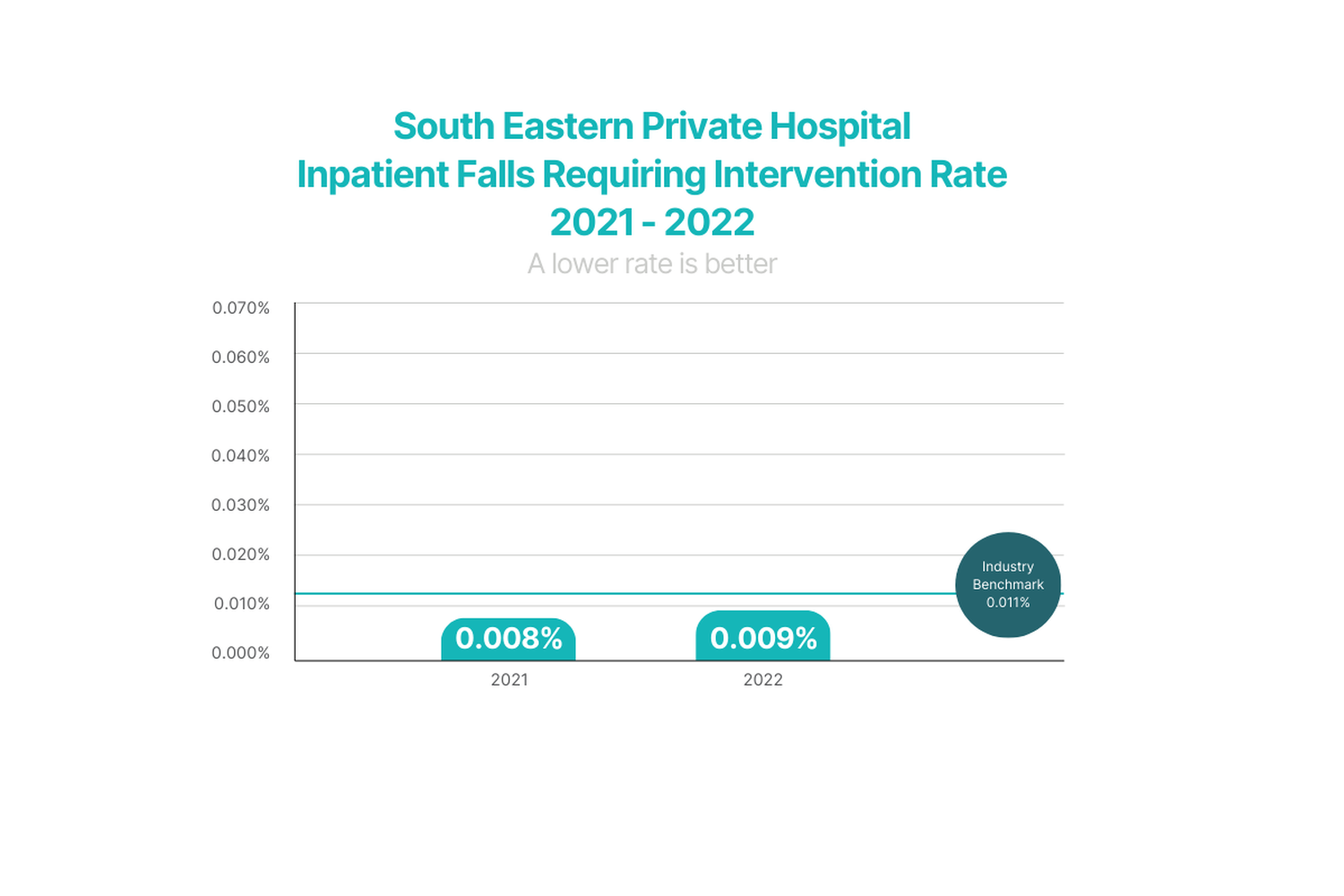
Unplanned Readmissions
South Eastern Private Hospital's Unplanned Readmission Rates
The rate of unplanned re-admissions provides an indication of the effectiveness of our planning processes, for when people are discharged from hospital.
The graph below shows the number of patients that were re-admitted to South Eastern Private within 28 days of discharge from hospital, with a diagnosis related to the same condition as the original admission.
South Eastern Private Hospital’s rate is below (better than) the industry benchmark. This is achieved, for example, through the presence of dedicated Discharge Planners, Social Workers and other Allied Health staff as part of better discharge planning initiatives, plus pre-admission clinics where patients' discharge needs are identified prior to admission.
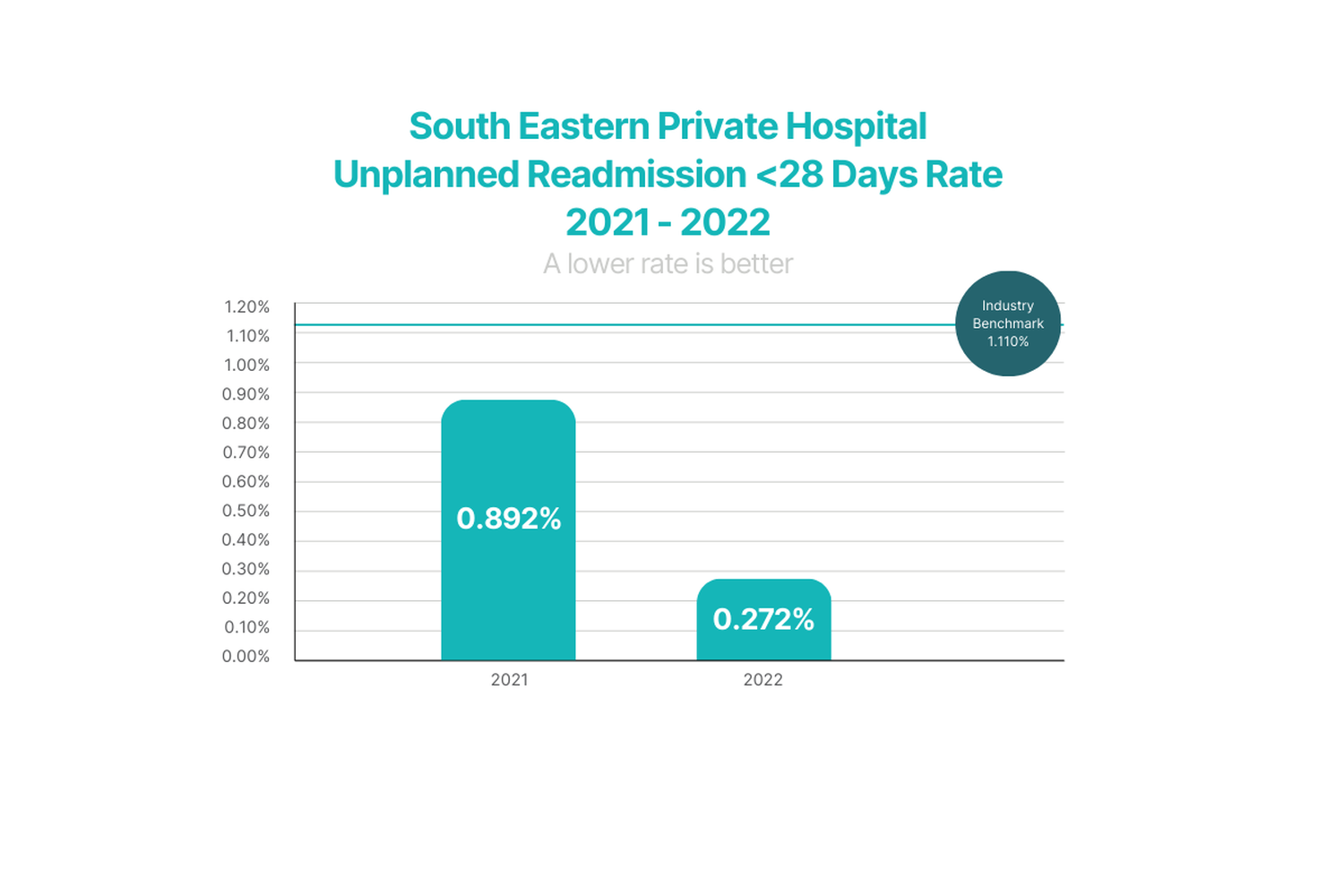
Medication Errors
South Eastern Private Hospital's Medication Errors
Medication errors include any errors in the dispensing and administration of medication that require a medical intervention.
The graph below shows the number of patients who required an intervention as a consequence of a medication error. South Eastern Private Hospital’s rate is lower than the industry benchmark.
We achieve this through a number of medication safety initiatives, including the adoption of the National In-Patient Medication Charts endorsed by the Australian Commission on Safety and Quality in Health Care (ACSQHC), and implementing a standardised patient labelling system when administering injectable medicines.
Medication incident rates and outcomes are monitored at our hospital to determine if our initiatives are reducing the error rate and level of patient harm.
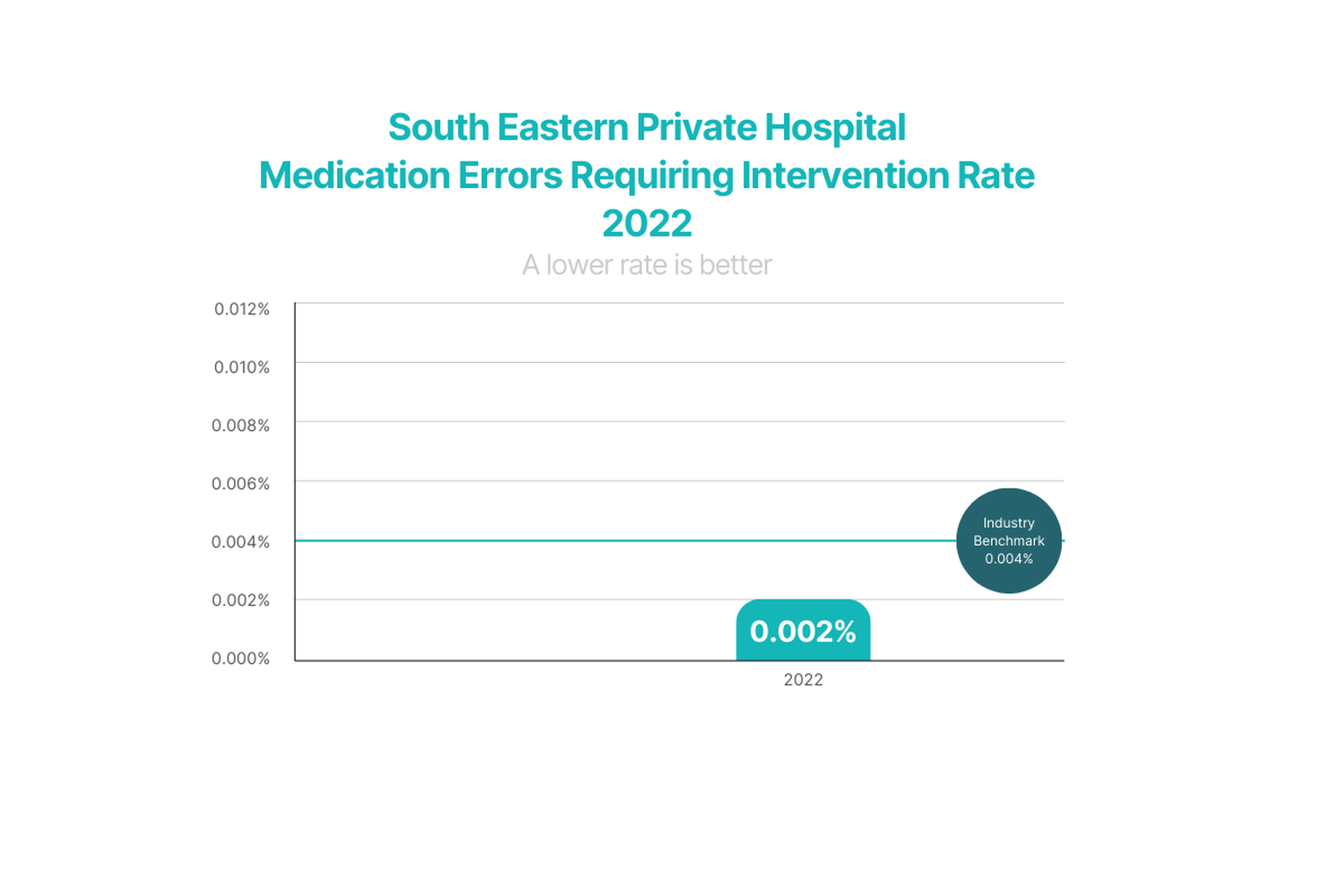

Pressure Injuries
South Eastern Private Hospital's Pressure Injury Rate
A pressure injury is an area of damage to the skin and underlying tissue caused by constant pressure or friction. This can sometimes occur when a patient is in one position and unable to easily move for a long period.
Pressure injuries can be prevented. We also help to reduce the likelihood of our patients developing pressure injuries during their hospital stay, by assessing their individual risk and follow individual care plans.
As part of our clinical care, we inspect skin frequently, keep skin dry, ensure patients have access to the best nutrition and hydration, and help and encourage patients to move frequently.
This is very important in maintaining quality care as pressure injuries can cause significant pain and discomfort that can slow a patient’s recovery.
The graph below shows the number of patients who developed a pressure injury while at South Eastern Private Hospital. South Eastern Private Hospital’s rate is slightly higher than the industry benchmark.
We achieve this rate through an established Pressure Injury Prevention Management Program and the reporting and monitoring of every pressure injury for the purposes of identifying areas for improvement.
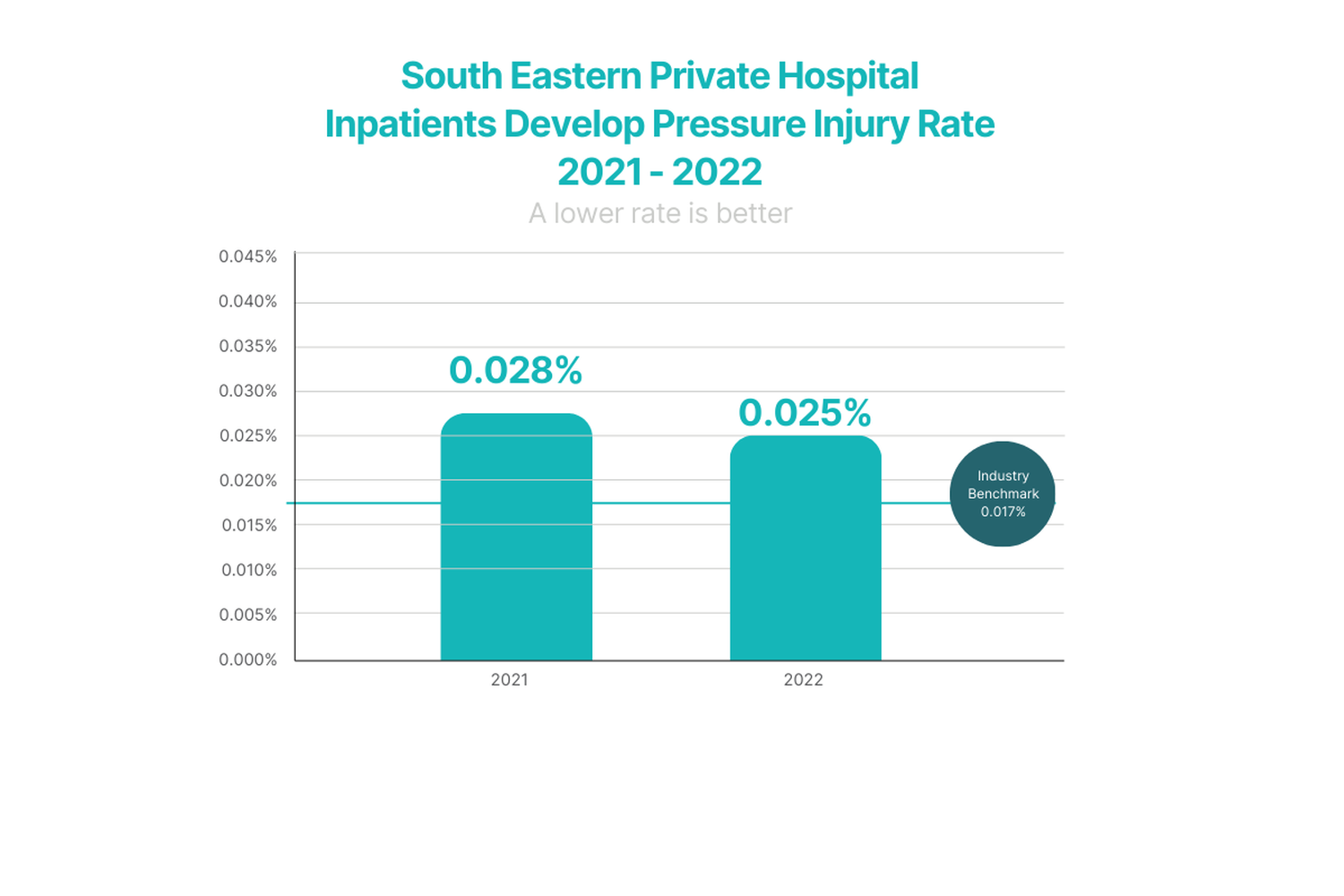
Adverse Blood Transfusion Events
South Eastern Private Hospital's Adverse Blood Transfusion Events
As part of your hospital admission, you may require a blood transfusion, which is a procedure where you receive blood through your vein. Blood transfusions may be necessary for a number of reasons, for example, if you have a surgical procedure, you are anaemic or if your body is not producing sufficient blood cells. Blood transfusions can be a lifesaving measure, but is not without some risk and therefore is only prescribed after a doctor has deemed it necessary.
Sometimes an adverse reaction to blood transfusion can occur and is treated immediately.
South Eastern Private Hospital is higher this year than compared to the average industry rate.
We achieve this by ensuring blood is only prescribed when necessary; ensuring staff are competent in blood transfusion management; and by ensuring that blood and blood product usage is in line with current best practice guidelines, as set out by the National Standard for Blood and Blood Products.
Note: this relates to only one patient event out of all the patients who received a blood transfusion in 2022.
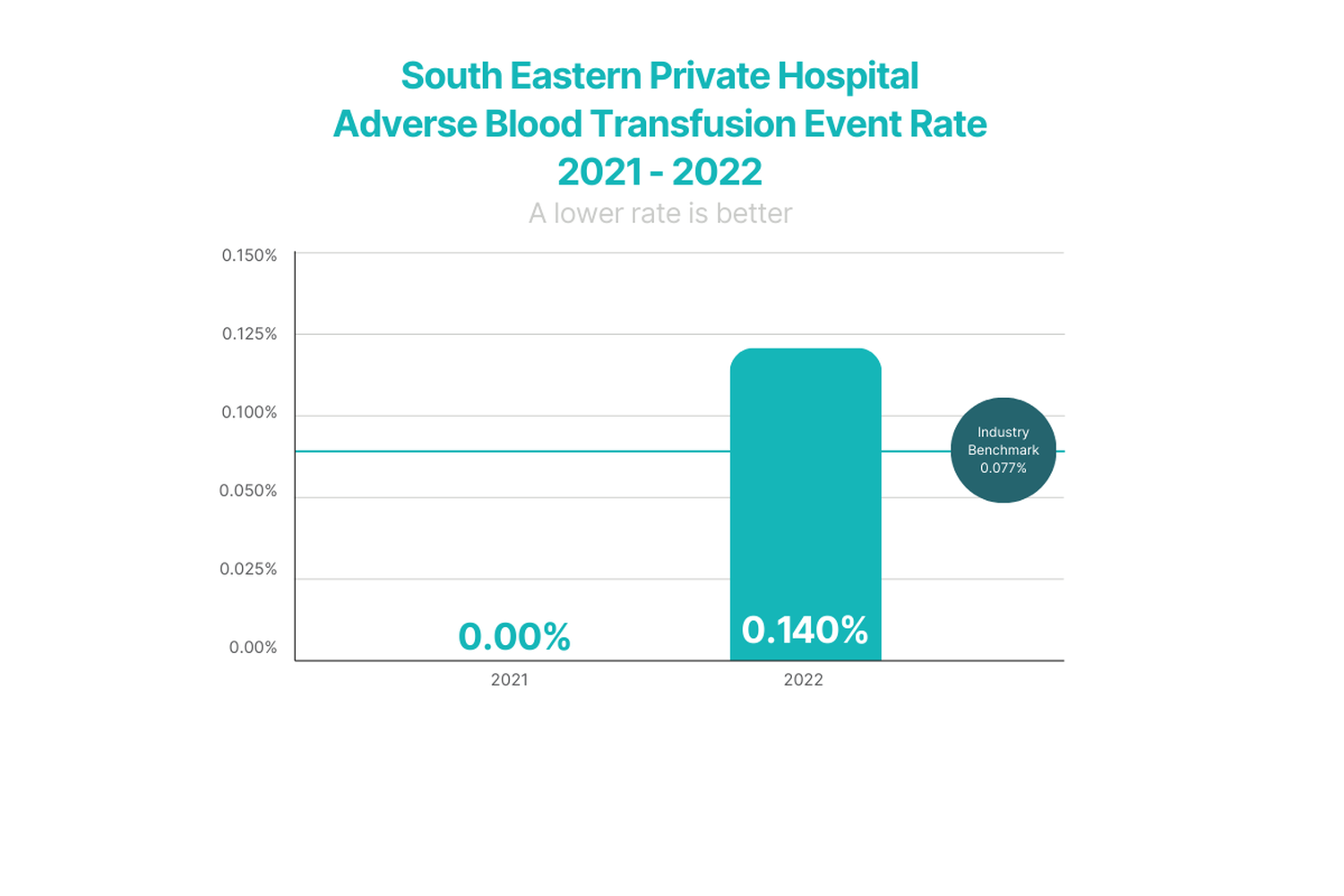
Individual Care Plan - Mental Health Inpatients
South Eastern Private Hospital's Individual Care Plan Result
A comprehensive care plan is a document describing agreed goals of care, and outlining planned medical, nursing and allied health activities for an individual patient.
Individual care plans reflect shared decisions made with patients, their carers and families about the tests, interventions, treatments and other activities needed to achieve the goals of care.
The result below shows the number of patients with an individual care plan that has been collaboratively developed by the patient and our mental health team.
South Eastern Private Hospital's rate is higher than the industry benchmark.
